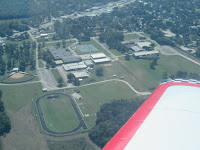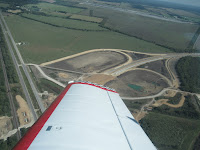The Liberty Gazette
November 24, 2020
Ely Air Lines
By Mike Ely and Linda Street-Ely
Linda: The young Indian girl, Mary Ross, was good at math. Really good. In the early part of the 20th century. Before calculators. Born of smart stock, her great-grandfather the longest serving Cherokee Chief ever, Mary was never given a list of things “girls can’t do.” Instead, she was sent to school. Teaching other Indian children math and science was one way she spread her encouragement and determination.
She became the first Native American female engineer, and in 1942, the first female engineer in the history of the Lockheed Corporation. I don’t think they had to fill any predetermined minority headcounts back then. She was the star they needed. Not just any engineer. An aerospace engineer, one of the 40 founding engineers hired to work at the renowned and highly secretive Skunk Works.
A few years after helping design the P-38 “Lightning” jet fighter, she designed rockets and created concepts for interplanetary space travel. Decades ago, she was figuring out how to make Earth-orbiting flights in a variety of vehicles for crew and satellites. Imagine the work it took to get a rocket outside the Earth’s atmosphere. Her contributions benefit both the defense and civilian space industries and laid the groundwork for missions that haven’t happened yet.
And so how fitting when last year she was featured on the Sacagawea gold dollar. Since much of her work is still classified, the team designing the coin chose one of the known equations she would have used. To figure the velocity needed to break free from the Earth’s atmosphere and beyond, she had to calculate the requirements for that distance of interplanetary space travel, determine plane orbit and transfer orbit energy. The formula on the coin is this:
V∞ is the orbit velocity when the orbit distance tends to infinity.
μ = GM, the standard gravitational parameter of the primary body with mass M.
r is the distance of the orbiting body center.
Got it? That’s a simple one.
Also on the coin is an image of an astronaut closely resembling American Indian (Chickasaw) astronaut John Herrington. We happened to meet him in Houston in September last year when he joined the Apollo Chamber Orchestra for a night of fantastic space-themed storytelling and music. We had a blast talking airplanes with him after the concert. And to think that so much of his story unfolded because of the work of Mary Golda Ross. It’s satisfying to know she lived to almost 100 and got to see some of the fruits of her labors.
Mary never had a desire to go into space herself. She loved conquering the challenges of figuring out how to get it done. She did, however, believe that women would make wonderful astronauts. She’d just stay down here and analyze all the data.
Was she “one of the guys”? No. She was “one of the engineers.” A darn good one. A stellar one.
ElyAirLines.blogspot.com
















